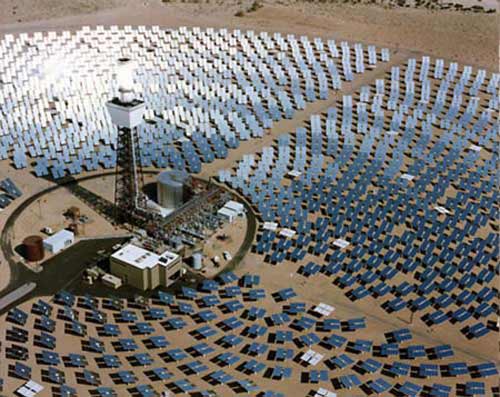
The past decade has seen tremendous advances in solar power technology that are transforming how we generate, store, and consume energy around the world. As solar becomes more affordable and efficient, it is emerging as a mainstream energy source with the potential to significantly reduce global carbon emissions and usher in a new era of clean, renewable energy.
The Falling Costs of Solar Power
One of the biggest drivers of the solar revolution has been the dramatic decline in the cost of solar photovoltaic (PV) panels over the last 10-15 years. Technological improvements, economies of scale, and streamlined manufacturing have resulted in solar PV costs dropping by over 90% since 2009. This steep cost reduction has made solar power competitive with fossil fuels in many parts of the world. With further expected declines in solar costs, it is projected that solar will become the cheapest form of electricity globally by 2030.
Impressive Growth of Solar Installations
Fueled by rapidly declining costs, worldwide solar power capacity has grown at an average annual rate of over 40% in the last decade. Total global solar PV installations have risen from under 10 gigawatts (GW) in 2008 to over 600 GW by the end of 2019. Solar energy now accounts for over 2.5% of global electricity generation, up from less than 0.1% just 10 years ago.
The bulk of growth has come from a few early adopters like China, Japan, Germany and the United States, although solar is now taking off in new markets across Africa, Asia and Latin America as well. Industry experts project that solar capacity could grow 3-4 fold and reach over 2000 GW globally by 2030.
Innovations in Solar Cell Technology
A key factor underlying declining solar PV costs and improved efficiency has been persistent innovations in solar cell technology itself. Early solar panels were based predominantly on crystalline silicon cells with laboratory efficiency around 25%. Today, advanced cell designs like PERC (Passivated Emitter and Rear Cell) and heterojunction technology can achieve efficiency of over 22% in mass production.
Thin-film technologies like Cadmium Telluride (CdTe) have also made great strides, with First Solar recently announcing a CdTe cell with conversion efficiency of 22.1%, at par with multi-crystalline silicon. On the lab scale, even higher efficiency levels of 26-29% have been achieved with multi-junction cells combining different semiconductor layers. As novel designs and materials are adopted, average solar cell efficiencies are expected to continue improving in coming years.
Emergence of Utility-Scale Solar Farms
The solar revolution is being led by the emergence of massive utility-scale solar photovoltaic farms around the world, particularly in sun-rich landscapes like the Midwest and Southwest United States, the Middle East and Chile. These projects leverage economies of scale to deliver solar power at record-low prices of 3-4 cents/kWh or less, which is highly competitive with natural gas peaker plants.
Top project developers like NextEra, First Solar, and Recurrent Energy have pipelines exceeding 10-15 gigawatts of upcoming utility solar farms globally. Emerging solar-storage hybrid projects are also showing great promise to provide clean power at night. Floating solar farms on reservoirs are another important innovation opening up new terrains for large-scale solar.
Solar Storage Technologies Overcoming Intermittency
One common concern regarding solar power is its intermittent nature, providing power only when the sun shines. However, rapid advances in energy storage technologies are helping overcome solar’s intermittency, enabling broader adoption. Lithium-ion battery costs have fallen nearly 90% in the last decade, making storage-backed solar PV increasingly affordable.
Beyond batteries, new options like flow batteries and compressed air storage are gaining traction as well. Smart inverters with advanced grid balancing capabilities can also smooth out solar variability. As solar-plus-storage becomes more cost-competitive, it is expected to play a major role in enabling high renewable grid penetration.
Distributed Solar and the Rise of Prosumers
While utility solar farms are driving overall growth, decentralized small-scale solar installations are also surging. This includes rooftop solar on homes and businesses, along with community solar projects. These distributed systems engage customers directly as “prosumers” – producers and consumers of renewable energy.
Continued technology improvements and innovative financing like solar leases and PPAs have unlocked the distributed solar market. USA has witnessed a 10-fold rise in residential solar over the last decade, with over 2 million homes now powered by rooftop PV. Developing economies are also seeing a solar microgrid revolution, with small standalone systems providing affordable, reliable power access in remote areas.
Key Policies and Regulations Accelerating Solar Adoption
Favorable government policies and regulations have played an essential role in spurring rapid solar adoption worldwide. Renewable energy mandates like Renewable Portfolio Standards in the USA, Feed-in-Tariffs in Europe and Bifacial Module policy in China have created strong incentives for solar deployment. Progressively declining solar incentives have also enabled market growth while reducing costs to ratepayers.
USA’s Investment Tax Credit, for instance, has provided crucial tax benefits to spur residential and utility solar. Net metering policies that compensate rooftop solar at retail rates have also accelerated distributed PV. Governments are further supporting solar via competitive auctions, preferential loans, land access, grid integration policies and phase out of fossil fuel subsidies.
Environmental and Economic Benefits of the Solar Revolution
The stunning growth of solar power brings far-reaching environmental and economic benefits that are accelerating the transition. Solar PV generates electricity with zero emissions during operation, helping tackle climate change cost-effectively. It also curbs air pollution, enhances energy security through indigenous power generation, and reduces dependence on imported fossil fuels.
On the economic front, solar creates local jobs in manufacturing, construction and maintenance. It can drive rural electrification in developing regions, empowering communities. As solar gets cheaper than grid retail power, it gives consumers energy cost savings and choices. For nations seeking affordable, reliable and clean energy, solar offers an optimal solution.
Challenges and Roadblocks for Wider Solar Adoption
Despite its promise and progress, solar energy faces challenges in becoming a mainstream global electricity source. While costs have fallen dramatically, upfront solar PV installation prices remain daunting for many customers. Access to financing is crucial in this regard. Outdated electricity grid infrastructure also needs modernization to accommodate high intermittent solar input.
Transmission bottlenecks may arise as distant solar farms expand. Integration of massive decentralized rooftop solar presents its own complexity. Troublingly, some jurisdictions are throttling net metering support and imposing solar fees, risking slower adoption. Non-policy roadblocks like permitting delays also persist. These challenges underscore the importance of smart, solar-friendly policies and regulations to smooth the transition.
Exciting Innovations and Trends to Watch
The future of solar power promises to be exciting, with incredible ongoing innovations across the value chain. Here are some interesting developments to watch that could reshape the industry:
- Perovskite solar cells with potential for easy printing and ultra-high efficiency
- Solar roads and building-integrated PV expanding usable area
- Floating solar on water bodies unlocking vast new potential sites
- AI and blockchain enabling decentralized solar power trading
- Concentrated solar power with thermal energy storage for 24X7 clean energy
- New solar designs like semi-transparent cells suitable for windows, glass facades
- Space-based solar power that can overcome day-night cycles
- Solar desalination tackling both energy and water scarcity synergistically
The Outlook for Solar Going Forward
As solar power advances on its exponential growth trajectory, the possibilities are indeed exhilarating. With supportive policies, technological improvements, and clean energy commitments, the share of solar PV worldwide could rise 10-fold crossing 20% by 2030.
Solar is ready to lead the global energy transition with its versatility, modularity and cost-competitiveness. Its democratizing potential to decentralize energy access and empower communities also makes it a socio-economic game-changer. The solar revolution has begun in earnest, offering hope for building a sustainable energy future.
How is solar energy generated?
Solar energy is generated by converting sunlight into electricity using photovoltaic cells made of semiconducting materials like silicon. When sunlight hits these cells, the absorbed photons knock electrons loose generating an electric current that is channelled into wires as electricity.
What are the benefits of going solar?
Going solar provides numerous benefits, including reduced electricity bills, predictable energy costs through fixed solar pricing, reduced carbon footprint, enhanced property aesthetics and value, increased energy independence and resilience, creation of local jobs, and helping fight climate change.
Is rooftop solar cheaper than utility grid power?
Thanks to declining solar costs, rooftop solar-generated electricity is now cheaper than conventional utility power in many parts of the world. This trend of solar undercutting grid prices will accelerate with further cost reductions.
Can solar meet all our energy needs?
While the potential of solar power is enormous, it may not be able to meet 100% of global energy demand any time soon. However, solar generation could feasibly meet up to 50% or more of electricity needs in many regions in the coming decades with supportive policies and grids.
What are the main challenges for wider solar adoption?
Some key challenges slowing down solar adoption include upfront installation costs, lack of access to financing, grid interconnection issues, permitting delays, utility resistance with net metering cuts, and unsupportive policies in some regions. Rapid tech cost declines and policy reforms are needed.
Is solar energy storage expensive?
Yes, solar energy storage using lithium-ion batteries remains expensive, though costs have dropped nearly 90% in the last 10 years and will continue to fall with technology improvements and manufacturing scale. There are also alternative emerging storage solutions that can help balance solar intermittency.
Can old inefficient solar panels be recycled?
Yes, solar panels can be recycled safely today. Silicon and other semiconductor materials can be recovered for reuse in new panels. As solar expands exponentially, establishing effective PV recycling systems will be crucial for sustainability.
How long do solar panels last?
Modern solar panels are very durable and can operate reliably for around 25-30 years. Many manufacturers are now offering 20-25 year power performance warranties as well. With proper maintenance, panels may outlast their warranties and generate longer.
What are the best locations for solar farms?
The best locations for large utility-scale solar farms are sun-rich arid regions with abundant vacant land and high direct normal irradiance, like deserts in the American southwest, Chile, Middle East, North Africa, and Australia.
Which countries lead in solar power adoption today?
China, Japan, Germany, the United States and India have been the top countries pushing solar PV installation growth in recent years. China leads in total solar capacity, while countries like Germany and Australia have high solar penetration levels.
The solar revolution is transforming global energy, with solar power finally realizing its vast potential through massive scale-up and cost declines. Led by key markets, innovative policies, tech breakthroughs, falling storage costs, and cloning environmental factors, solar PV is on the cusp of becoming the default low-cost electricity source nearly everywhere on Earth within this decade.
With appropriate smart grid flexibility and demand management, high solar penetration would enable deeply decarbonizing power systems worldwide. Harnessing the power of the Sun to light our future while fighting climate change is perhaps humanity’s most uplifting energy endeavour that will pay rich socio-economic dividends for generations. The solar revolution has just begun, and the possibilities ahead are bright indeed!
- SEO Powered Content & PR Distribution. Get Amplified Today.
- PlatoData.Network Vertical Generative Ai. Empower Yourself. Access Here.
- PlatoAiStream. Web3 Intelligence. Knowledge Amplified. Access Here.
- PlatoESG. Automotive / EVs, Carbon, CleanTech, Energy, Environment, Solar, Waste Management. Access Here.
- PlatoHealth. Biotech and Clinical Trials Intelligence. Access Here.
- ChartPrime. Elevate your Trading Game with ChartPrime. Access Here.
- BlockOffsets. Modernizing Environmental Offset Ownership. Access Here.
- Source: https://usgreentechnology.com/the-solar-revolution-how-advances-in-solar-power-are-changing-the-world/
- :has
- :is
- :not
- $UP
- 10
- 2000
- 2008
- 2009
- 2019
- 2030
- 22
- a
- Able
- abundant
- accelerate
- accelerated
- accelerating
- access
- accommodate
- Accounts
- Achieve
- achieved
- across
- adopted
- adopters
- Adoption
- advanced
- advances
- affordable
- africa
- ago
- ahead
- AIR
- Air pollution
- All
- along
- also
- alternative
- Although
- america
- American
- an
- and
- Announcing
- annual
- Another
- any
- appropriate
- ARE
- areas
- arise
- around
- AS
- asia
- At
- Auctions
- Australia
- average
- Balance
- balancing
- based
- batteries
- battery
- BE
- become
- becomes
- becoming
- been
- begun
- being
- benefits
- BEST
- Biggest
- Bills
- blockchain
- bodies
- both
- bottlenecks
- breakthroughs
- Bright
- Brings
- broader
- Building
- businesses
- by
- CAN
- capabilities
- Capacity
- carbon
- carbon emissions
- carbon footprint
- cell
- Cells
- chain
- challenges
- change
- changing
- cheaper
- cheapest
- Chile
- China
- choices
- clean energy
- Climate
- Climate change
- combining
- come
- coming
- coming years
- commitments
- Common
- Communities
- community
- competitive
- complexity
- Concern
- construction
- consume
- Consumers
- continue
- conventional
- Conversion
- converting
- Cost
- cost reduction
- cost savings
- Costs
- could
- countries
- created
- creates
- creation
- credit
- crucial
- Current
- Cusp
- Customers
- cuts
- decade
- decades
- decentralize
- decentralized
- Decline
- Declines
- Declining
- Default
- delays
- deliver
- Demand
- Democratizing
- dependence
- deployment
- designs
- developers
- developing
- developments
- different
- direct
- directly
- Distant
- distributed
- distributed systems
- dividends
- do
- down
- dramatic
- dramatically
- drive
- drivers
- driving
- dropped
- Dropping
- during
- Early
- early adopters
- earth
- East
- easy
- Economic
- economies
- Economies of Scale
- Effective
- efficiencies
- efficiency
- efficient
- Electric
- electricity
- electrons
- emergence
- emerging
- Emissions
- empower
- empowering
- enable
- enabled
- enabling
- end
- energy
- engage
- enhanced
- Enhances
- enormous
- environmental
- Era
- essential
- establishing
- Europe
- Even
- everywhere
- exciting
- exhilarating
- Expand
- expanding
- expands
- expected
- expensive
- experts
- exponential
- Exponential Growth
- exponentially
- faces
- factor
- factors
- Fall
- Fallen
- Falling
- far-reaching
- Farms
- Fees
- few
- fight
- fighting
- financing
- First
- fixed
- Flexibility
- floating
- flow
- Footprint
- For
- form
- fossil
- Fossil fuel
- fossil fuels
- from
- front
- Fuel
- fuels
- further
- future
- gaining
- game-changer
- GAS
- generate
- generated
- generates
- generating
- generation
- generations
- Germany
- gives
- glass
- Global
- Globally
- going
- Government
- Governments
- great
- Grid
- Grow
- grown
- Growth
- Harnessing
- Have
- help
- helping
- here
- High
- higher
- highly
- Hits
- Homes
- hope
- How
- However
- HTTPS
- Hybrid
- importance
- important
- imposing
- improved
- improvements
- improving
- in
- Incentives
- include
- includes
- Including
- increased
- increasingly
- incredible
- indeed
- independence
- india
- industry
- industry experts
- inefficient
- Infrastructure
- Innovation
- innovations
- innovative
- input
- installation
- instance
- integration
- interconnection
- interesting
- into
- investment
- issues
- IT
- ITS
- itself
- Japan
- Jobs
- jpg
- jurisdictions
- just
- Key
- key factor
- lab
- laboratory
- Lack
- Land
- large
- large-scale
- Last
- Latin
- latin america
- layers
- lead
- Leads
- leases
- Led
- less
- levels
- Leverage
- light
- like
- Loans
- local
- locations
- Long
- longer
- low-cost
- made
- Main
- Mainstream
- maintenance
- major
- MAKES
- Making
- management
- mandates
- Manufacturers
- manufacturing
- many
- Market
- Markets
- Mass
- massive
- materials
- May..
- Meet
- Middle
- Middle East
- midwest
- million
- modernization
- module
- more
- most
- Nations
- Natural
- Natural Gas
- Nature
- nearly
- needed
- needs
- net
- New
- night
- normal
- North
- novel
- now
- numerous
- numerous benefits
- of
- off
- offering
- Offers
- Old
- on
- ongoing
- only
- opening
- operate
- operation
- optimal
- Options
- or
- Other
- our
- out
- Outlook
- over
- overall
- Overcome
- overcoming
- own
- panels
- particularly
- parts
- past
- Pay
- penetration
- performance
- perhaps
- phase
- Photons
- plants
- plato
- Plato Data Intelligence
- PlatoData
- Play
- played
- policies
- policy
- Pollution
- portfolio
- possibilities
- potential
- power
- powered
- Predictable
- predominantly
- presents
- Prices
- pricing
- printing
- Producers
- Production
- Progress
- progressively
- project
- projected
- projects
- promise
- promises
- proper
- property
- provide
- provided
- provides
- providing
- Pushing
- rapid
- rapidly
- Rate
- Rates
- reach
- ready
- realizing
- recent
- recently
- recycling
- reduce
- Reduced
- reduces
- reducing
- reduction
- reductions
- regard
- regarding
- regions
- regulations
- reliable
- remain
- remains
- remote
- Renewable
- renewable energy
- reshape
- residential
- resilience
- Resistance
- resulted
- retail
- reuse
- Revolution
- Rich
- Rise
- Risen
- risking
- roadblocks
- roads
- Role
- Rural
- safely
- Savings
- Scale
- scale-up
- Scarcity
- security
- seeing
- seeking
- seen
- semiconductor
- Share
- shines
- showing
- significantly
- Silicon
- since
- Slowing
- small
- smart
- smooth
- solar
- Solar cells
- solar energy
- solar panels
- Solar Power
- solution
- Solutions
- some
- Soon
- Source
- standalone
- standards
- States
- storage
- store
- streamlined
- strides
- strong
- Stunning
- suitable
- Sun
- sunlight
- support
- Supporting
- supportive
- surging
- Sustainability
- sustainable
- Sustainable Energy
- Systems
- tackle
- tackling
- taking
- tax
- tax credit
- tech
- technological
- Technologies
- Technology
- than
- that
- The
- the world
- their
- There.
- thermal
- These
- this
- though?
- Through
- time
- to
- today
- top
- Total
- traction
- trajectory
- transforming
- transition
- tremendous
- Trend
- Trends
- under
- underlying
- underscore
- United
- United States
- unlocked
- unlocking
- upcoming
- USA
- usable
- using
- utility
- value
- Vast
- versatility
- very
- via
- Watch
- Water
- we
- WELL
- were
- when
- which
- while
- wider
- will
- windows
- with
- within
- witnessed
- world
- worldwide
- would
- year
- years
- zephyrnet
- zero







